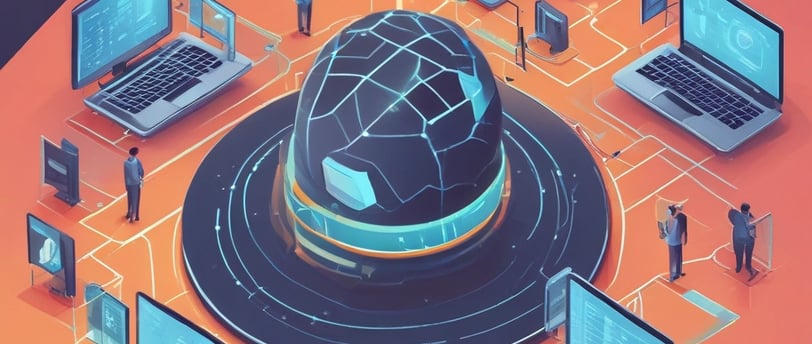Decoding the Digital Battlefield: Why OSI and TCP/IP Mastery is Non-Negotiable for Cybersecurity Pros
In today's complex digital landscape, a deep understanding of the OSI and TCP/IP models is paramount for cybersecurity professionals. This article illuminates why mastery of these network communication frameworks is essential for effective threat identification, incident response, vulnerability assessment, secure network design, and the configuration of crucial security tools like firewalls and intrusion detection systems, ultimately equipping professionals to defend against evolving cyber threats.
CYBERSECURITYTECHNOLOGYNETWORK ARCHITECTURE
Julius Jeppe
3/13/20252 min read


In the ever-evolving landscape of cybersecurity, where threats morph and adapt with alarming speed, a solid foundation is the cornerstone of effective defense. While cutting-edge tools and AI-driven solutions grab headlines, the bedrock of a cybersecurity professional's expertise lies in understanding the fundamental building blocks of network communication: the OSI (Open Systems Interconnection) and TCP/IP (Transmission Control Protocol/Internet Protocol) models.
These models aren't mere academic exercises; they are the blueprints of the digital world, outlining how data travels across networks. For cybersecurity professionals, a deep understanding of these models is not just beneficial—it's absolutely essential.
Why Mastery Matters:
Threat Identification and Analysis:
The OSI model breaks down network communication into seven distinct layers, each with specific functions. Understanding these layers allows security professionals to pinpoint where vulnerabilities might exist. For example, knowing the functions of the Network Layer (Layer 3) helps in analyzing IP address manipulation and routing attacks.
TCP/IP, the practical implementation of network communication, provides the framework for understanding how data packets are structured and transmitted. Analyzing TCP/IP headers, flags, and port numbers enables the detection of malicious activity, such as port scanning, SYN floods, and other network-based attacks.
Incident Response and Forensics:
When a security incident occurs, time is of the essence. A thorough understanding of OSI and TCP/IP allows for rapid analysis of network traffic, enabling faster identification of the attack vector and the extent of the breach.
In digital forensics, these models are indispensable. By tracing the flow of data through the layers, investigators can reconstruct the sequence of events, identify the source of the attack, and gather crucial evidence for prosecution.
Vulnerability Assessment and Penetration Testing:
Ethical hackers and penetration testers leverage their knowledge of OSI and TCP/IP to simulate real-world attacks. By understanding how protocols function at each layer, they can identify weaknesses in network configurations and applications.
For instance, a penetration tester might exploit vulnerabilities in the Transport Layer (Layer 4) by crafting malicious TCP packets or manipulating connection states.
Firewall and Intrusion Detection/Prevention System (IDS/IPS) Configuration:
Effective firewall rules and IDS/IPS configurations require a deep understanding of network traffic patterns. Knowing the protocols and ports used by different applications allows security professionals to create granular rules that block malicious traffic while allowing legitimate communication.
For example, understanding the difference between TCP and UDP, and how statefull firewalls track connections is crucial.
Secure Network Design:
Building secure networks from the ground up requires a comprehensive understanding of how data flows. By incorporating security measures at each layer of the OSI model, security professionals can create robust defenses that minimize the risk of attacks.
Network segmentation, and subnetting require a solid understanding of layer 3.
Beyond the Basics:
In today's complex threat landscape, cybersecurity professionals must go beyond simply memorizing the layers of the OSI model or the TCP/IP stack. They need to understand how these models are implemented in real-world scenarios, how they are exploited by attackers, and how to develop effective countermeasures.
Continuous learning and hands-on experience are crucial. By staying up-to-date with the latest network protocols, security tools, and attack techniques, cybersecurity professionals can ensure they are well-equipped to defend against the ever-evolving threats of the digital battlefield.
In conclusion, the OSI and TCP/IP models are not relics of the past; they are the essential tools that empower cybersecurity professionals to navigate the complexities of modern networks. Mastering these models is not an option—it’s a necessity for those who stand on the front lines of digital defense.